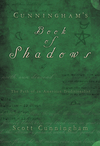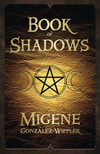Ascribing Methods of Magic

Originally written in Spanish, Book of Shadows was intended to present traditional Wicca to an Hispanic audience. Witchcraft in Spanish is translated as brujería. It was brought to the New World by the Spanish Conquistadores who were deeply steeped in its practices. Spain was one of the European countries where Witchcraft flourished most successfully. This is easy to understand when we realize the Celtic roots of ancient Spain. Witchcraft was so popular in Spain that it became the center of the "Holy Inquisition." The infamous Torquemada, the Grand Inquisitor of the dreaded Spanish Inquisition, was aided and abetted by none other than Ferdinand and Isabella, as Torquemada was their personal Confessor. The famous Spanish painter Don Francisco Goya y Lucientes, who was the royal painter of Carlos IV and his court, exposed the horrors of the Spanish Inquisition and the darkest practices of Witchcraft with powerful black-and-white drawings he called caprichos. Witchcraft was very much alive and doing exceedingly well in Spain during the Middle Ages. One of Goya's most famous drawings depicts two witches flying on a broom to their Sabbath, which in Spanish is known as aquelarre. Another drawing, equally famous and very disturbing, shows a young witch pulling a tooth from the mouth of a hanged man while she shields her face from the corpse. A hanged man's tooth was supposed to be a powerful shield against enemies and could also be used to send that enemy to the nether regions.
All of these and many other practices of Wicca were brought to Latin America by the Spaniards. There they flourished and blossomed with swift speed. So powerful was the influence of Witchcraft (brujería) in Latin America that the word itself became synonymous with all magical practices of the darker kind. This discredited Witchcraft and made it something spurious and sinister—something to fear. To this day, Latin Americans believe a brujería to be a black magic spell cast by ill-intended people. A brujo, or witch, is considered by most of Latin America to be a black sorcerer, often in league with dark forces. These brujerías have to be exorcised and dispelled, and in order to do just that, Latin America has created an immense array of cleansings and counter spells designed for protection and counterattack. From Argentina, Mexico, Cuba, Puerto Rico, and Colombia to Guatemala, Honduras, Venezuela, and Uruguay, Latin America is a seething cauldron of magical beliefs and practices; and try as hard as it may, the Catholic Church, which did not succeed in destroying Wicca with the Inquisition, has equally failed in uprooting these remnants of its erstwhile enemy from its Latin American heirs.
There is no other area in the world so deeply steeped in the practice of magic as Latin America. Magic is not something you scoff at in these countries; it is a way of life. Latin Americans spend millions of dollars every year in the practice of all kinds of magic: magic for love, for money, for prosperity and success, for good health, and, above all, for protection against enemies and their evil magic.
With the influx of large numbers of Latin American immigrants to the United States, magic is now used to get green cards and naturalization papers and especially to win big in games of chance like Lotto. The poorest immigrants will not hesitate to spend hundreds of hard-earned dollars they can ill afford to pay for their magical needs. Sometimes they borrow money to pay for a magic spell. Everything can be solved by magical means in Latin America. So Wicca had its revenge on Christianity. It has had a magnificent revival in Latin America where people spend more money on Witchcraft than they do on their parish church. But because Witchcraft—brujería—is still a "dirty" word for many Hispanics, I decided to write a book on traditional Wicca, so that they understood the true meaning of the religion and its traditional beliefs and practices. I wanted them to know that Witchcraft is not evil. It is a simply an Earth religion, rooted in nature and natural forces, where the intention is to be one with the soul of all things. I carefully outlined the beliefs and practices of Witchcraft, its deities, its rituals, its initiations, and its magic spells. Although there are many types of covens and practices in modern Wicca, I chose Gardnerian Witchcraft as the basis of the book because it is the most conservative and traditional.
In a market overflowing with many excellent books on Wicca, my own offering is succinct and concise. It is Witchcraft at its purest. I chose the title Book of Shadows, not only because that is the name of the practicing witch's working manual, but because it conjures the essence of a belief system shrouded in darkness. It is a book designed to dispel the "darksome" image of a religion that is luminous, innocent, and all-embracing. I hope its message is well received.
About Migene González-Wippler
Related Products


is subject to certain Terms and Conditions